The Ultimate Guide to the “Chinese Alphabet”
You’re here because you want to know everything about the Chinese Alphabet, right?
Let’s get stuck straight in then, because there’s a lot of amazing stuff to talk about which include the following:
Chinese Alphabet || A Brief History
Chinese Alphabet || How to Learn the Alphabet?
Chinese Alphabet || How Logical is Chinese?
Chinese Alphabet || “How many letters in the Chinese Alphabet?”
Chinese Alphabet || Radicals in Chinese
Chinese Alphabet || Pinyin
Chinese Alphabet || More Examples
Chinese Alphabet || Most Common Chinese Characters
Chinese Alphabet || THE EXPERTS
Chinese Alphabet || Funny Mistakes
Chinese Alphabet || Further Reading?
Chinese Alphabet || Chinese Numbers?
Chinese Alphabet || FAQs
OK first and foremost let’s set the record straight.
In English we have 26 letters in the alphabet, in Russian we have 33 in the Cyrillic alphabet, but…
There is no such thing as the Chinese Alphabet.
Chinese is all about characters and we don’t put them together like we do with letters in our alphabets to make a word because these characters actually make up words themselves.
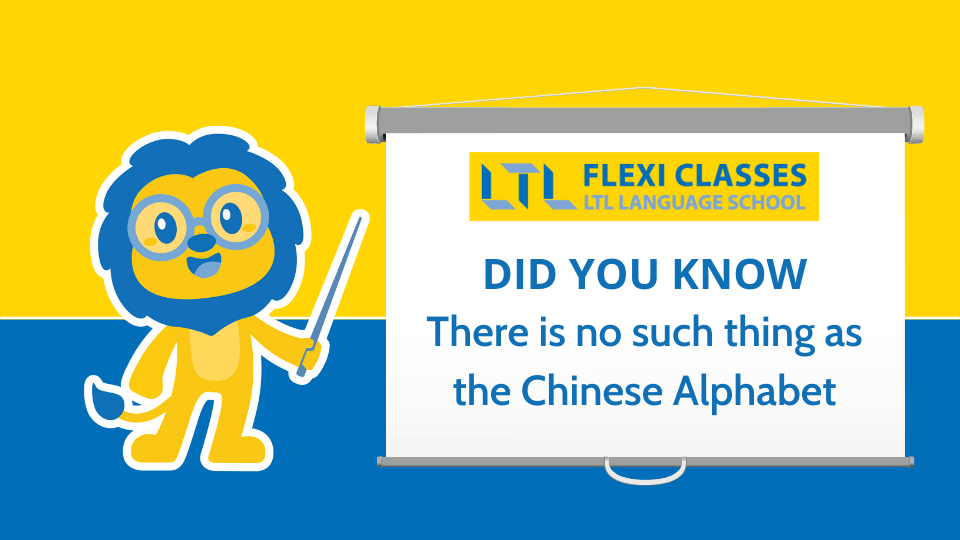
Each character is one syllable. One character on its own can be a word, but many words are made up of two, three or even more characters put together.
There is no Chinese Alphabet – just thousands upon thousands of characters. Some of the characters look remarkably similar also! Check it out below.
Before getting into the juicy stuff, it’s worth taking a step back and looking at the history of Chinese.
After all, the country oozes history and culture and the Chinese characters and language plays a huge role in that.
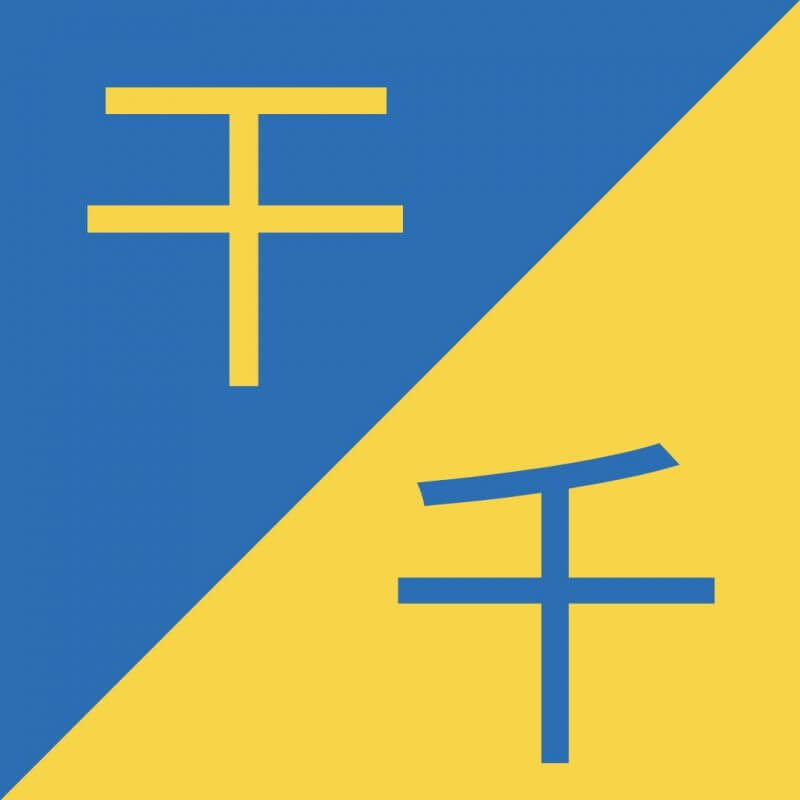
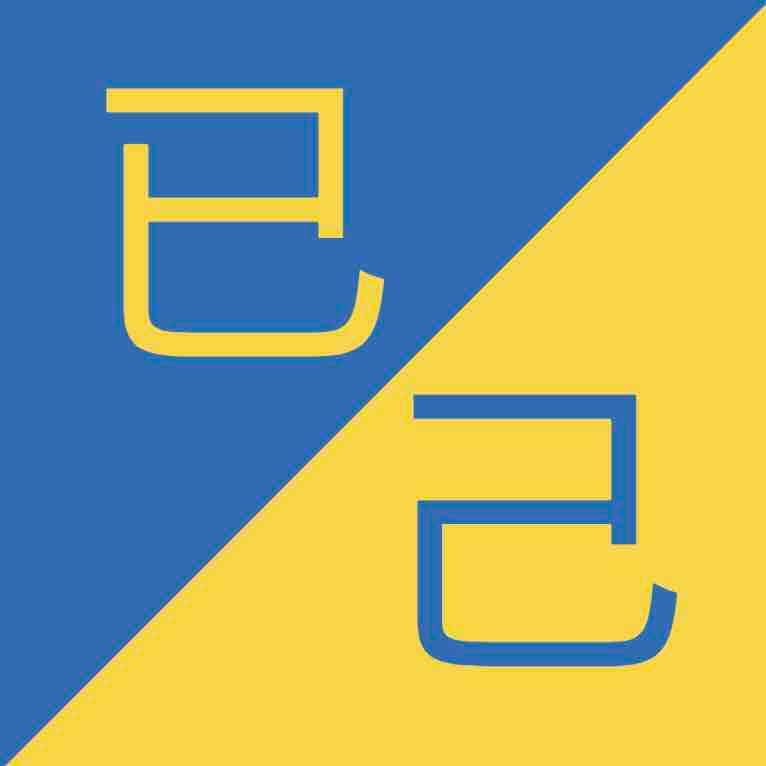
Chapter 1 – The History of Chinese Characters/Chinese Alphabet
The Chinese language is one of the oldest in the world.
Unlike many languages, Chinese doesn’t have an alphabet and it’s not written as a series of letters, but rather as a series of pictures that have meaning and sounds.
DID YOU KNOW – Historians have found ancient Chinese alphabet writing script that dates back over 3,000 years, however the modern writing script we recognize today, is around 2,000 years old and was developed during the Han Dynasty.
Of course, like all languages, “Chinese alphabet” has evolved in the 2,000 years since the ‘clerical script’ was first created.
The written characters have evolved into the written script for many different modern languages such as Cantonese (mother tongue in Hong Kong and Guangdong, China) and Kanji (Japanese characters).
Within mainland China these characters continued to develop until 1950 when simplified Mandarin characters were introduced to reduce China’s illiteracy rates.
These simplified characters are the most commonly used in China today, although the traditional characters are still used in Taiwan and Hong Kong.
Chapter 2 – So if there is no Chinese Alphabet, how do we start Learning Chinese?
Good question and the answer is simple (in theory anyway)…
We start learning the characters from the very beginning.
As you start to take in your first 10, 20 Chinese characters you’ll start to realise these characters appear in many words, and some characters even have exactly the same sound.
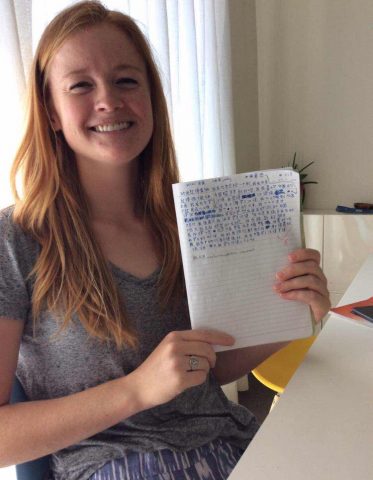
How can that be?
Let’s try and explain without giving you too much of a 头疼 (tóu téng) that’s headache in Chinese by the way!
Let’s take the most basic Chinese character: 一 (Yī – this means one)
Great, we’ve learnt our first Chinese character. That means every time I see 一 it means that it’s one of something, right? Wrong.
As there is no Chinese alphabet, characters can be joined together to make another word.
The saving grace is that this does follow a logic generally. Let us explain:
This is the character meaning common or general: 共 Gòng
So we’ve now learnt two Chinese characters but we are about to learn our third word, and that is simply by putting these two characters together to make…
一共 (Yī Gòng)
Anyone take a guess at the meaning of 一共? It means altogether.
Kind of logical. This is the case in point for pretty much all of your Chinese studies, you put characters together that you have already learnt to make new words.
So far we have learnt two characters but actually know a total of three words.
As you build your knowledge of Chinese characters you’ll see characters come together to make new vocabulary and you’ll get to the stage where you can make a strong educated guess as to what a word means even if you don’t know for sure.
Let’s try and give another example:

Two more new characters for you: 时 (Shí means time) and 区 (Qū means Area)
So we have two characters with their own meaning individually, time and area.
But what happens when we put these two characters together?
What could the word 时区 mean?
时区: Shí Qū means Time Zone
Time and area together, means time zone in Chinese.
So, despite the lack of a physical Chinese alphabet there is a large element of consistent thinking when it comes to learning Mandarin.
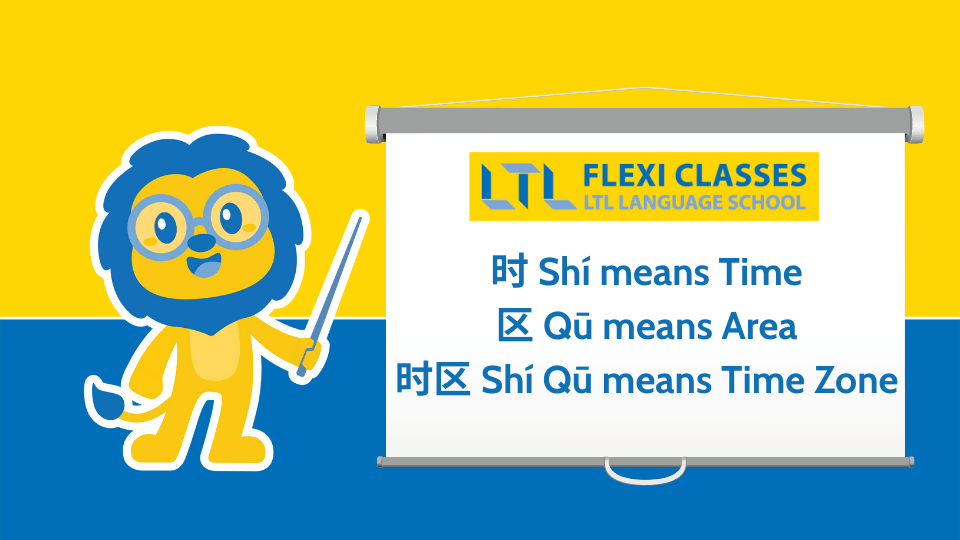
BONUS | If you want to learn more Chinese words based on this sort of method we’ve prepared a brilliant post with graphics to boot which you should check out.
You can find our genius way to learn Chinese words here.
Chapter 3 – How Logical can Chinese Characters be?
It’s easy to stare at a Chinese article, newspaper or even a sentence and say “Nope, that language is not for me”, but hear us out.
Despite the enormous number of characters there are so many great examples of how clever the “Chinese alphabet” can be…
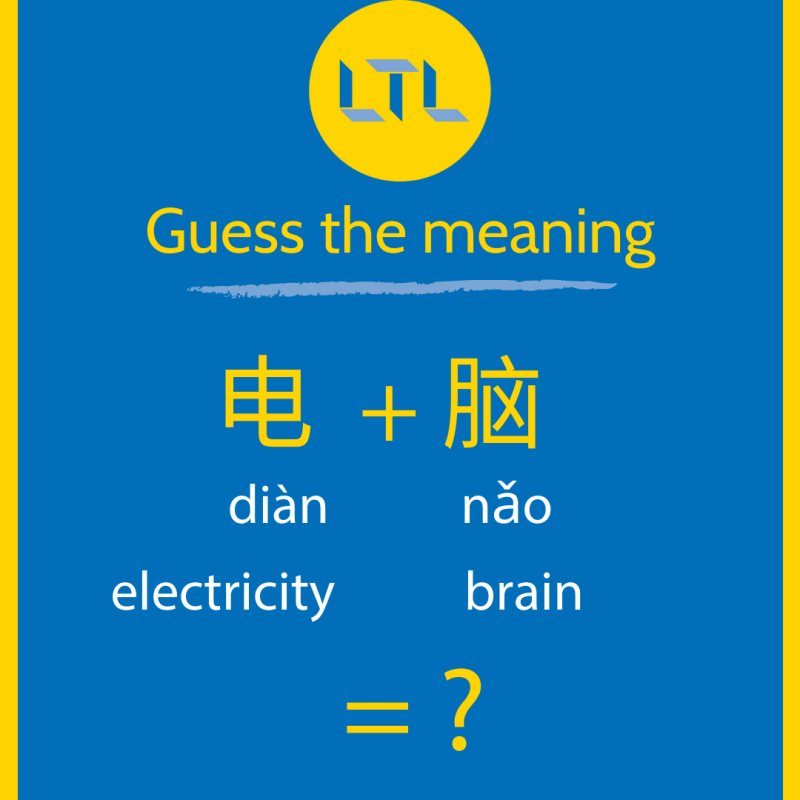
Let’s take the word for Electric – 电 diàn
Now let’s take these words:
- Vision – 视 shì
- Brain – 脑 nǎo
- Shadow – 影 yǐng
OK, we’ve picked up four new words.
Now for each of these three words we are going to place the word for electric in front of it to make a new word, which you may be able to guess from the English literals
- Electric + Vision = TV 电视 (diànshì)
- Electric + Brain = Computer 电脑 (diànnǎo)
- Electric + Shadow = Cinema 电影(diànyǐng)
It doesn’t really get much more rational than that!
So although Chinese doesn’t have an alphabet where you put letters together to make words, instead they have a number of characters you do the same with.
Some words are made up of just one character, others from two or three (maybe even four or five in rarer cases).
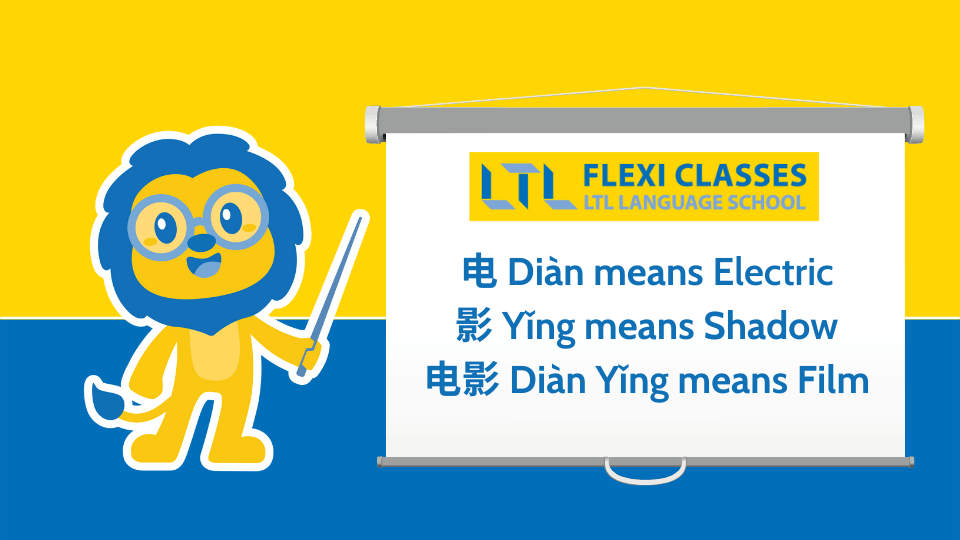
Chapter 4 – “How many letters in the Chinese alphabet?”

This is a question many people ask before starting out their Chinese studies.
If you’ve read this far you’ll know that this question doesn’t have an answer due to the lack of a Chinese alphabet.
That, however, doesn’t stop us getting stuck into some numbers to see how broad and in depth the Chinese language can go. Don’t let that put you off though…
To speak day to day Chinese you can cope quite comfortably with roughly 500-750 Chinese characters to your name.
- 2,000 Chinese characters – the number you need to read a newspaper
- 2,633 Chinese characters – the number of characters you should know to pass the HSK 6 exam
- 8,000 Chinese characters – the number an educated Chinese person will know
- 20,000 Chinese characters – the number a modern day Chinese dictionary would use
But how many Chinese characters are there in total?
These numbers above are large but they seem minute when we quote you these two figures:
Let’s start with the Great Compendium of Chinese Characters, in Chinese the Hànyǔ dà zìdiǎn (汉语大字典). They quote that the number of existing Chinese characters is actually 54,648.
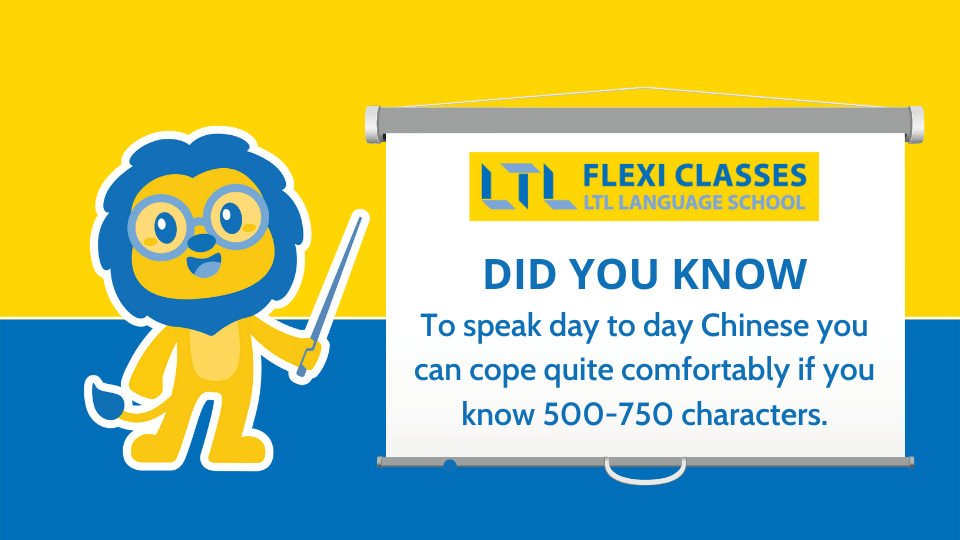
Hold on. We aren’t finished there!
The Dictionary of Chinese Variant Form, in Chinese the Zhōnghuá zì hǎi (中华字海) takes things to another level, however. This rather tame dictionary includes definitions for a mere 106,230 characters!
So if you are ever asked how many letters in the Chinese alphabet you can not only claim that question is factually incorrect, but you can fire some huge numbers at them, at get them well and truly intimidated!
Oh and whilst we are onto numbers, let’s quickly digress – check out this video on how easy it is to learn BIG Chinese Numbers!
back to the alphabet…
You’ll get used to seeing how the structure of the characters are built and gain clues from the strokes that are included and that leads us onto our next topic of discussion…
Chapter 5 – Radicals: What are Chinese Radicals?
Radicals are a great way to figure out what a character is if you aren’t quite familiar with it but before we get into that let’s give you the definition of a radical when it comes to studying Chinese characters:
This is taken from Wikipedia’s article about Chinese radicals…
A Chinese radical (Chinese: 部首; pinyin: bùshǒu; literally: “section header”) is a graphical component of a Chinese character under which the character is traditionally listed in a Chinese dictionary. This component is often a semantic indicator (that is, an indicator of the meaning of the character), though in some cases the original semantic connection has become obscure, owing to changes in character meaning over time.
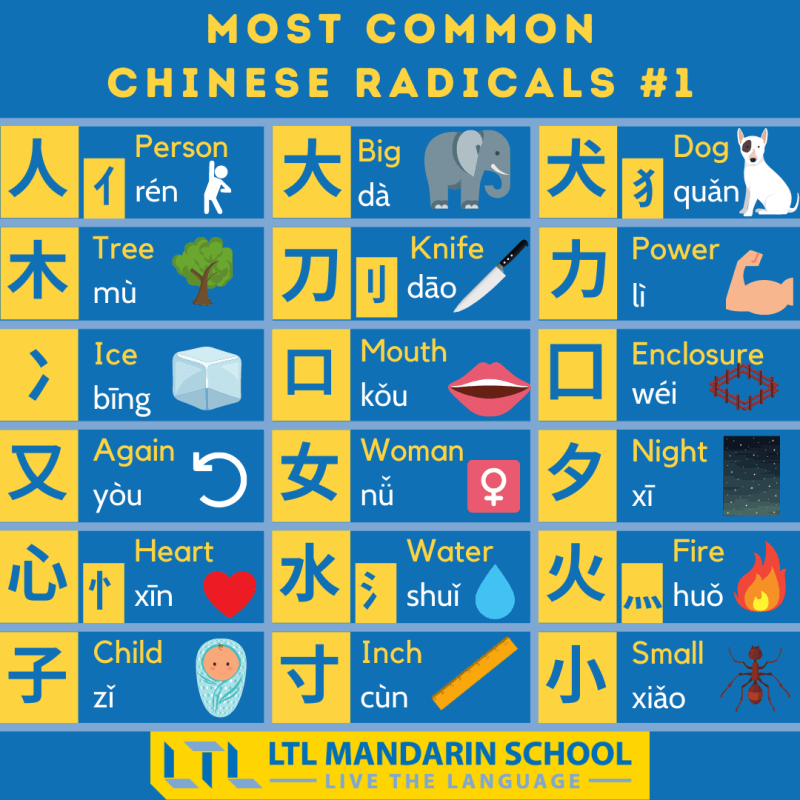
Let’s give you some examples:
Here you’ll see three strokes. This is a radical in Chinese and it refers to Water.
This means that any character you see with these three strokes on the left side of the character has a relation in one way or another to water.
This is great because even if the character is unrecognisable to you, as you learn more and more you’ll understand that because the water radical is included you can narrow down the options on what the character might be.
Here are some examples of the water radical in action
- Liquid: 液 – yè
- River: 河 – hé
- Foam or Bubble: 泡 – pào
So now you want to know how many radicals are there in the Chinese language, right?
In total there are 214 in the traditional Kangxi 康熙 radical system.
Some appear on the left side of a character, some on top, underneath, or on the right and some are much more frequently seen than others.
Some radicals aren’t quite as obvious or as clear as water (excuse the pun) but have some form of underlying meaning.
Here are some more examples of the more obvious radicals:
- The radical for person is 亻(rén)
- An example of that radical in action is the character 你 which means you (nǐ)
- The radical for ice is 冫(bīng)
- An example of that radical in action is the character 冻 which means freeze (dòng)
- The radical for door is 门 (mén)
- An example of that radical in action is the character 间 which means room (jiān)
LOOK AGAIN – Notice how the third radical 门 surrounds the character to make 间 rather than appearing on the left side. Radicals come in all shapes and size but can often give clues as to the meaning of the character upon first glance.

If you want to get to know more about radicals in Chinese, we’ve prepared this great starter guide for you which includes an amazing FREE download!
Chapter 6 – The Closest Thing to a Chinese Alphabet – Introducing Pinyin
So although there isn’t a Chinese alphabet, the introduction of pinyin is a saving grace for foreigners learning to speak Chinese.
So what exactly is pinyin? Our old friend Wikipedia will help explain again:
Hanyu Pinyin (simplified Chinese: 汉语拼音), often abbreviated to pinyin, is the official romanization system for Standard Chinese in mainland China and to some extent in Taiwan. It is often used to teach Standard Mandarin Chinese, which is normally written using Chinese characters. The pinyin system was developed in the 1950s.
You’ll have noticed above each time we introduce a Chinese character there is a word next to it which tells us how to pronounce the character.
That is in fact Pinyin.
- 门 mén
- 影 yǐng
- 视 shì
The character is shown on the left and next to it is the Pinyin. This tells us how to pronounce the character along with the tone above.
Chinese Tones is a whole other topic which we won’t get into now but we do have a handy Chinese Tones infographic and a video below on learning Chinese tones which will give you an introduction into the four Chinese tones used.
Words in Chinese are split into two parts of Pinyin, initials and finals.
As the names suggest, the initials are the first part of the word and the finals proceed them. For example:
- fēn 分 can be split into initial (f) and final (ēn)
- shuō 说 can be split into initial (sh) and final (uō)
- shàng 上 can be split into initial (sh) and final (àng)
Every single word in Chinese will be made up of an initial and a final (with the tone showing on the final).
In total there are 21 initials and 37 finals.
Pinyin is a great way to ease a new Chinese language student into learning Mandarin.
The first step will be to learn the tones and the sounds of the initials and finals. Before too long you’ll be able to read pinyin and then you’ll start to match the characters to the pinyin.
Easy as that!
It’s worth noting some of the initials and finals have similars sounds to that of English but some do not. Certain sounds also sound very similar. This takes time and practice to understand.
Some examples of these are:
- shàng (as in Shanghai) – the sound is as you’d expect and sounds as you’d expect to pronounce in English.
- fēn – likewise above. The sound is as it looks in English.
- C – This is one to be aware of. The C is actually a “ts” sound, very much like the latter part of the word “bits”
- Q – Also one to watch. Q is pronounced with a “chee” like sound
- Zh – A sound we aren’t used to seeing in English. The Zh sounds like a “J”, for example the Chinese word Zhang comes out almost exactly like “Jang”
So you’ll see, whereas some of the initials and finals will follow the pattern of sound in English, some certainly do not.
The best bit of advice to give here is get the English sounds out of your mind when learning Chinese.
Easier said than done for sure, but don’t try and make it sound English, because in many instances it’ll make no sense to a native Chinese speaker!
HAVE YOU SEEN – Typing pinyin with tones is not possible on a keyboard… but we’ve changed that with our super useful pinyin generator. Check it out! Start typing pinyin with tones.
Chapter 7 – The Chinese Alphabet: More Examples
Wade-Giles
Before the pinyin system came into common use in mainland China there were several systems used to write Mandarin phonetically. One of the main romanisation systems used was the Wade-Giles system.
It was initially developed by a British ambassador to China, Thomas Francis Wade.
He became the first professor of Chinese at Cambridge university and published his first textbook on Mandarin in 1867.
He created his own phonetic system for the pronunciation of Chinese characters.
This system was then later polished by Herbert Allen Giles and his son Lion Giles, a British diplomat in China and a curator at the British museum respectively.
It logically became known as the Wade-Giles system.
This system shares some similarities with pinyin but there are significant variations with the pronunciation of consonants and vowels.
Today it has entirely been replaced by pinyin both inside of mainland China.
Though in Taiwan Wade-Giles is still used for some things such as geographical names.
For example in pinyin, Taipei is written instead as Táiběi (台北) and Kaohsiung is Gāoxióng (高雄).
Zhuyin Fuhao/Bopofomo
Zhuyin fuhao (注音符號) also known as Bopofomo is another system mainly used for writing Taiwanese Mandarin phonetically.
It uses 37 symbols and 4 tone marks to transcribe all of the sounds in mandarin.
The first four symbols are ‘bo’ ‘po’ ‘fo’ and ‘mo’ (ㄅㄆㄇㄈ), which is where the alternative name comes from.
Unlike Pinyin and Wade-Giles Zhuyin Fuhao is an independent phonetic system; it doesn’t use Roman alphabet letters.
In some cases this is an advantage, as the symbols are not easily confused with other pronunciations.
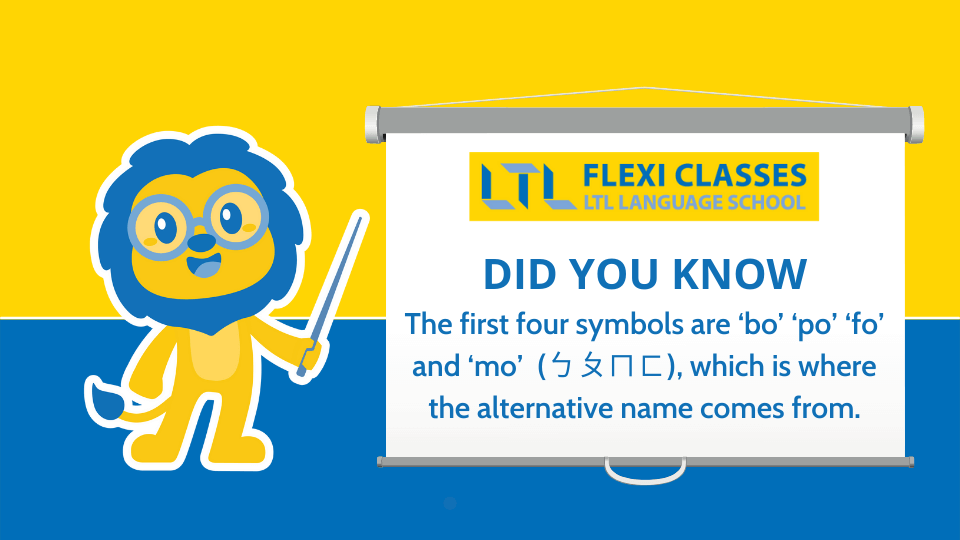
The system was developed in the early 1900s during the Republic of China Era.
A commission was led by a man named Wu Zhihui to unify Chinese pronunciation.
The symbols are based on Chinese philosopher and writer Zhang Binglin’s shorthand characters.
Zhuyin Fuhao is still used extensively in Taiwan, particularly in primary and middle schools to teach children the phonetic sounds. It is common to see it in textbooks alongside Chinese characters, as well as in dictionaries.
Ok so now we know all about Chinese characters, their history and variations of the Chinese alphabet let’s learn more about the most common Chinese characters…
Chapter 8 – The Top 10 Most Common Chinese Characters
Yes, learning written Chinese is largely about your ability to retain character knowledge but you’d be surprised how often the most common Chinese characters appear in day to day life.
Let’s go through the list of most popular Chinese characters one by one and give some examples of them in action.
These appear in everyday Chinese everywhere you go
| Rank | Hanzi | Pinyin | Meaning in English |
|---|---|---|---|
| 1st | 的 | de | (A grammatical particle) – Usage = 95.6 |
| 2nd | 一 | yī | one or a little – Usage = 94.3 |
| 3rd | 是 | shì | to be – Usage = 93.0 |
| 4th | 不 | bù | not – Usage = 91.8 |
| 5th | 了 | le | (a verb particle used for a change or completed action) – Usage = 90.7 |
| 6th | 人 | rén | person – Usage = 89.7 |
| 7th | 我 | wǒ | I, my or me – Usage = 88.7 |
| 8th | 在 | zài | located at, at – Usage = 87.8 |
| 9th | 有 | yǒu | have, there is – Usage = 87.8 |
| 10th | 他 | tā | he, him, his – Usage = 86.9 |
#1 : 的 (de – A grammatical particle)
Introducing to you the most used character in the “Chinese alphabet”, 的. Funnily enough this word does not have a specific meaning or translation.
“的” is one of three “de particles” in Chinese and is used to indicate possession.
Let’s show you some examples:
我的手机
wǒ de shǒujī
My mobile phone
我们的老师
wǒmen de lǎoshī
Our teacher
你的猫
nǐ de māo
Your cat
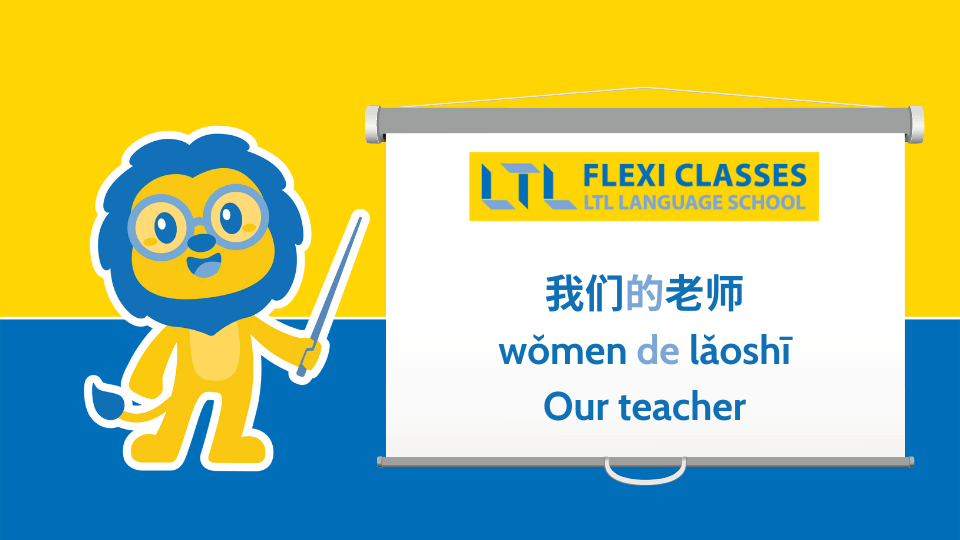
The “的” would also replace an apostrophe in English, “My Dad’s car” for example would translate to:
我爸爸的车
Wǒ bàba de chē
My Dad’s car
#2 : 一 (yī – one or a little)
The Chinese character for the number one is the most simple of them all, written with just a single stroke.
The numbers two and three also follow a very similar logic (二, 三) making these three Chinese characters very simple to remember.
The character 一 has a number of meanings making it the second most popular Chinese character.
These include first, best, once, only and so forth. Here are some examples of 一 in action:
一瓶牛奶
Yī píng niúnǎi
One bottle of milk
第一名
Dì yī míng
First place
我们看起来一样
Wǒmen kàn qǐlái yīyàng
We both look the same
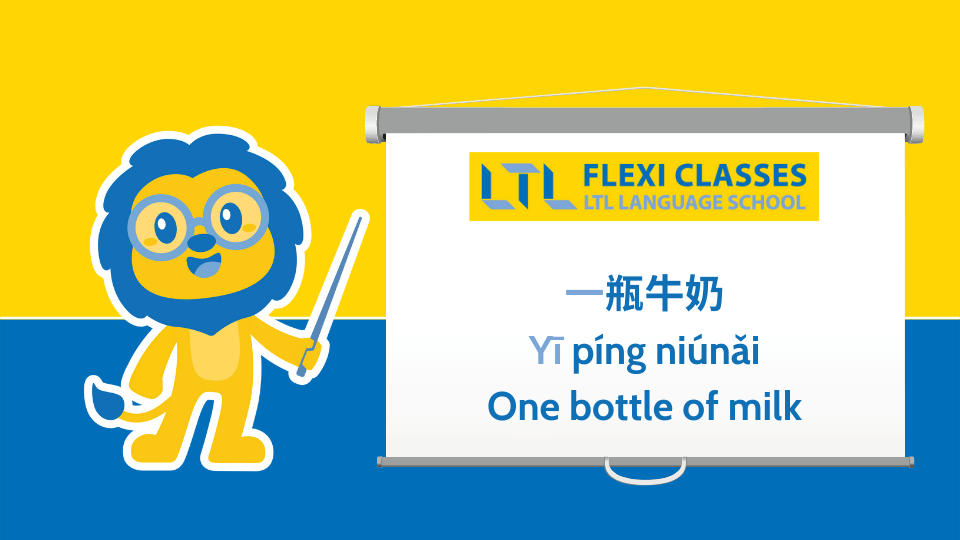
As you can see there are many potential different uses for 一, hence why it is the second most used in Mandarin.
#3 : 是 (shì – to be)
是 is generally used to link two nouns together and will be a character you see and hear every single day without fail.
The pinyin for shì is seen a lot so be careful when listening.
For example the pinyin for the number ten is Shí, with the rising tone. Be careful not to get these confused.
There is a famous Chinese tongue twister that only includes the pinyin ‘shi’, which we wrote a blog about it not so far back.
It’s worth a read!
我是学生。
Wǒ shì xuésheng
I am a student
你是老板吗?
Nǐ shì lǎobǎn ma?
Are you the boss?
你是英国人吗
Nǐ shì yīngguó rén ma?
Are you English?
A common mistake when learning Chinese many make is to use 是 to link a subject with an adjective. This is incorrect.
As our graphic above illustrates, batman does not approve!
For example, to say I am English you use 是 to link I and English. To say I am happy you omit the 是 and instead you can say 我很开心. 我是开心 is incorrect.
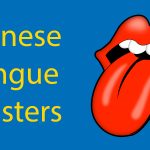
Chinese Tongue Twisters // 5 of the Best To Learn
One of the best ways to practice your Chinese pronunciation is to learn some Chinese tongue twisters. Try these Chinese tongue twisters and learn Chinese!
#4 : 不 (bù – not)
This is a negative and means either no or something/someone is not. It’s commonly found with the above character 是.
Whereas 是 alone means something IS, 不是 means IS NOT. Here are some examples:
我是学生。
Wǒ shì xuésheng
I am a student
我不是学生。
Wǒ bù shì xuésheng
I am not a student
我是澳大利亚人
Wǒ shì àodàlìyǎ rén
I am Australian
我不是澳大利亚人
Wǒ bù shì àodàlìyǎ rén
I am not Australian
#5 : 了 (le – A verb particle)
了 is a character that has given many foreigners a headache when trying to figure out exactly when and where to use it.
There is no real equivalent in the English language but it has no need to be feared.
In a nutshell 了 is used to signify the completion of an activity or the change in a situation.
As these are things that often come up in conversation 了 is rightly one of the more common characters in Mandarin.
There are many other grammar points regarding 了 but that’s for another day.
Download our Le Infographic here
现在太晚了 。
Xiànzài tài wǎn le.
Now it’s too late
他太帅了 。
Tā tài shuài le.
He is very handsome
他买了一个新手机。
Tā mǎi le yī gè xīn shǒujī.
He bought a new mobile phone
我们看过了。
Wǒmen kàn guo le.
We have seen it (already)
#6 : 人 (rén – person)
A nice simple character to remember which is a good thing considering it’s one of the most used characters in Chinese!
人 refers to a person or people and has the resemblance of a person walking, which can be illustrated further by Chineasy’s simple but effective flashcard below.
三个人
Sān gè rén
Three people
别人
Bié rén
Other people
工人
Gōng rén
Worker
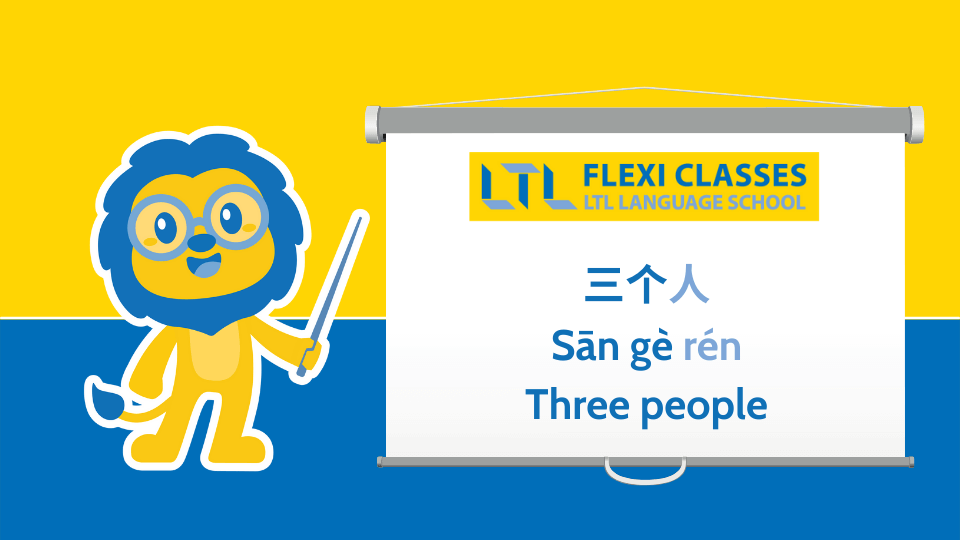
#7 : 我 (wǒ – I, my or me)
A character that, considering its meaning, you might expect to be higher up the list.
我 refers to I, my or me but actually the character will also be seen when the plural is used.
For example “we” translates to 我们 (Wǒmen) with the “men” referring to the plural.
我很好
Wǒ hěn hǎo
I am good
我们是意大利人
Wǒmen shì yìdàlì rén
We are Italian
我34岁
Wǒ 34 suì
I am 34 years old
我喜欢吃比萨
Wǒ xǐhuān chī bǐsà
I like to eat Pizza
我爱你
Wǒ ài nǐ
I love you
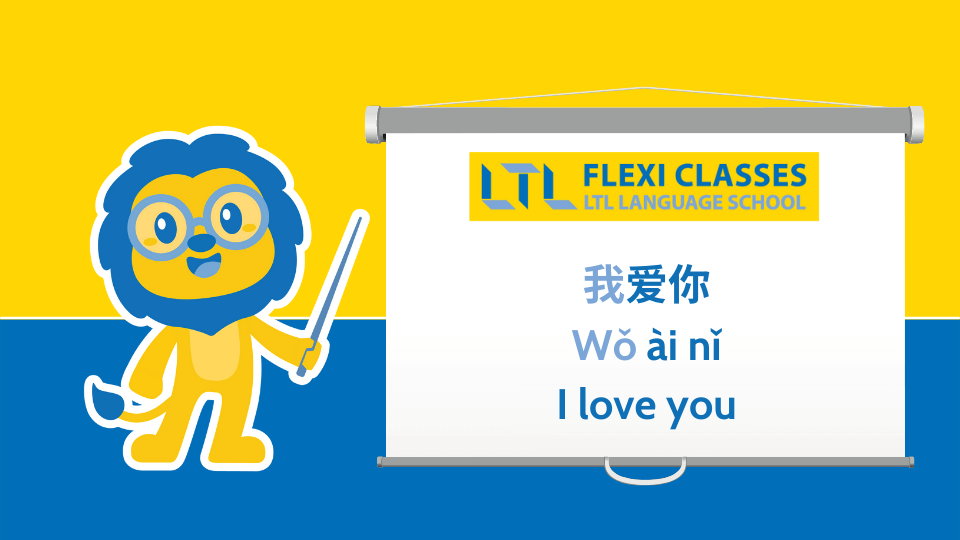
#8 : 在 (zài – located at, at)
在 is a verb which is used to confirm the location or presence of something.
It translates to “be in” or “be at”. It is different in the sense that English does not have a word directly related to this.
As with the above example, a common error when learning Chinese is to include 是 when using 在.
This is not correct.
For example saying 我是在上海 is not grammatically correct.
Instead, see the examples below:
我在上海。
Wǒ zài Shànghǎi.
I’m in Shanghai.
他们在英国。
Tāmen zài Yīngguó.
They’re in England.
谁在楼上?
Shéi zài lóushàng?
Who is upstairs?
你住在哪里?
nǐ zhù zài nǎ lǐ
Where do you live?
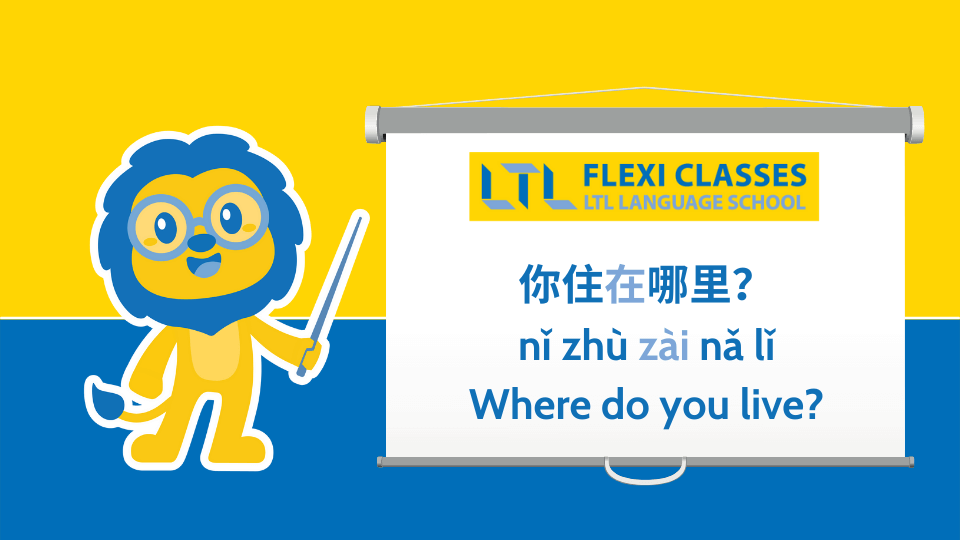
#9 : 有 (yǒu – have, there is)
有 is very commonly seen in Chinese and has many uses. The most basic of these is “to have”, therefore indicating possession.
To turn 有 into a negative you simply add 没 (méi) before it. This 没有 translates to “don’t have”.
Both examples, to have and not have are shown below:
今天你有课吗?
Jīntiān nǐ yǒu kè ma?
Do you have classes today?
我们有三个女儿 。
Wǒmen yǒu sān gè nǚ’ér.
We have three daughters.
我没有钱。
wǒ méi yǒu qián
I don’t have money.
日本有很多中国人。
Rìběn yǒu hěn duō Zhōngguó rén.
There are many Chinese people in Japan.
#10 : 他 (tā – he, him, his)
The concept of tā is actually a great example of why learning Chinese is not so difficult.
Whereas in English we have separate words for him, her, he, she and it; Chinese uses the same pinyin (albeit a different male and female Hanzi).
This is a common reason as to why many Chinese people learning and speaking English get he and she mixed up when speaking.
他 is the hanzi for the male version (he, him, his) whereas 她 is the female equivalent.
Thankfully, there is no difference when speaking, you just need to recognise the difference when writing and reading. Here are some examples of how tā can be used in a sentence in Chinese. There is also a third, 它, which refers to “it”.
他们
tāmen
They
他几岁了
tā jĭ suì le
How old is he?
他的书
Tā de shū
His book
他上周去了上海
Tā shàng zhōu qùle shànghǎi
He went to Shanghai last week
Chapter 9 – THE EXPERTS: What they said
So we’ve covered a large number of aspects based on the Chinese Alphabet and Chinese Characters but what about the evidence? We’ve talked the talk, but can we walk the walk?
Luckily for you we’ve spoke to two fluent non-native Chinese speakers.
Each have given their thoughts and tips on what it’s like to learn Chinese from the beginning and how to overcome those inevitable hurdles.
Oh quickly, speaking of experts, our founder at LTL might know a thing or two as well, right?!
OK back to it…
Simon from Omniglot
This SIMON AGER, who is the founder of the website omniglot.com.
Simon has a BA in Modern Chinese and Japanese Studies from the University of Leeds, studied Japanese at Kansai University of Foreign Languages in Osaka, and modern and classical Chinese literature at National Taiwan Normal University in Taipei.
He currently runs Omnglot.com, an online encyclopedia of writing systems and languages.
He speaks Mandarin fluently, Japanese fairly well, and has a basic knowledge of Cantonese and Taiwanese. He also speaks a few other languages.
“I studied Chinese, and Japanese, at universities in the UK, Taiwan and Japan, so have some experience of learning Chinese characters. I learnt both simplified and traditional characters, as well as Japanese kanji. It took a lot of time and effort, but was interesting and rewarding, and helped me get jobs in Taiwan and the UK. I found that learning the correct stroke order and writing characters by hand many times helped them stick in my memory. I also used flash cards, and connected the shapes of the characters, and the thing they represent, with their sounds by making mental pictures. The more characters I learnt, the easier it became, as I could see the connections between them and recognise patterns.”
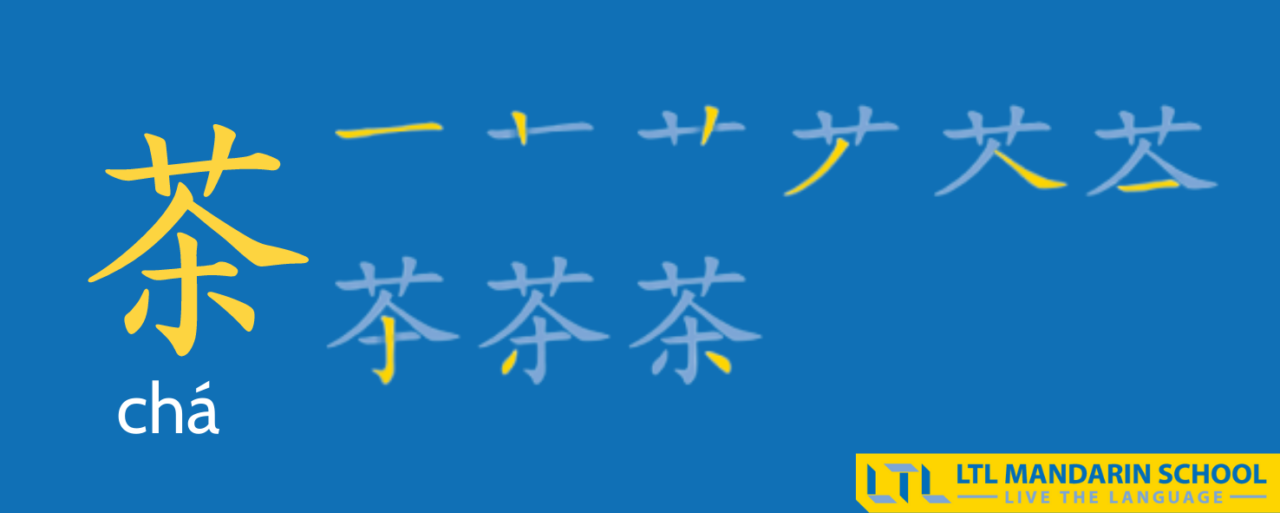
You can follow Simon’s Omniglot blog, YouTube account, Instagram page, and many more of his Social Media handles. Well worth a follow.

Simplified or Traditional Chinese? Which One Is Right For Me in 2025?
Simplified Chinese vs Traditional Chinese 🤔 This will depend on your goals and where you want to study or live. Let’s help you decide.
Lindsay from Lindsay does Languages

Next up we have language specialist Lindsay Williams who runs the website lindsaydoeslanguages.com.
Interestingly via her website she states that learning languages wasn’t a thing until she stumbled across GCSE Spanish in order to translate Shakira’s songs!
There’s a smart way to start learning a new language!
Lindsay does Languages started as a hobby and has grown into a full blown business where she teaches online as well as school groups and corporate groups.
Go Lindsay!
Lindsay kindly took time out of her busy schedule by contacting us and handing out this advice to our readers…
“When I’ve studied Chinese in the past, the characters always make for an interesting new layer to the language that you don’t get learning a language that uses a script you’re more familiar with. It might seem scary at first but when you change your mindset, treat it with a positive outlook, and find a way to learn and remember them that works for you, it’ll likely become one of your favourite things about learning Chinese!”
Olly from I Will Teach You A Language
Last but certainly not least we introduce to you, I Will Teach You A Language. This website a great online resource for learning languages run by Olly Richards.
We are delighted Olly reached out to us to give you, our valued readers, some further useful information when it comes to learning Chinese
“Learning to read Chinese is a big task, and it can be tempting to put off the task until later! In fact, I made that mistake myself in Japanese and Chinese, choosing to focus on speaking instead. Never again. If you truly wish to become fluent one day, you have to be literate in the language. And that starts with learning to read! When you can read, it unlocks an infinite amount of content, and that content will become your best teacher!”
If you wish to hear more from Olly (we’d recommend it!!) then give his YouTube and Instagram a lot. Lots of useful resources every week!
Chapter 10 – Funny Mistakes from Chinese Learners – Avoid These!
When learning to speak a language it is important that we immerse ourselves in the environment.
We have to take a deep breath and brave the streets and try and communicate with the locals.
However, it is inevitable that we will make some mistakes and some of these mistakes may cause them to burst into fits of laughter.
Because of the nature of Chinese, and the tones it’s super easy to make some rather embarrassing mistakes that lead to some red faces and locals in fits of laughter, but it’s all good!
Here are a list of some of the more common mistakes made by students learning Chinese. Learn from others mistakes but never be scared to make your own.
If we learn from them, we can all improve!
1. Qǐng wèn : means to ask. – Qīn wěn : means kiss
Getting these muddled could lead to obvious problems…
– Wǒ kě yǐ wèn nǐ ma ? Can I ask you a question?
-Wǒ kě yǐ wěn nǐ ma ? Can I kiss you?
Or worse,…
– Zhòngyào de shì wǒ wèn nǐ māmā. It’s very important I ask your mum.
– Zhòngyào de shì wǒ wěn nǐ māmā. It’s very important I kiss your mum.
Not knowing your tones could leave you shortchanged.

Chinese Dating 💔 The Good, The Bad & The Ugly
Dating in China, you are bound to find some differences and experience culture shock. Follow our guide to dating in China and learn about key cultural points.
2. Shì : to be (v) – Shí : 10
– Zhèi ge shì qī kuài. This is 7 kuai
– Zhèi ge shí qī kuài . This is 17 kuai
Luckily 10 kuài is barely more than a $ or a £ so it shouldn’t break the bank.
3. Yào diàn: Pharmacy – Yè diàn : Bar (the type where you drink alcohol).
– Tā bìng le, yīng gāi qù yào diàn. He is ill, he should go to the pharmacy.
– Tā bìng le, yīng gāi qù yè diàn. He is ill, he should go to the bar.
Getting them mixed up could make you look like you have a problem,
– Míngtiān zǎoshang dì yī jiàn shì shì, wǒ yīdìng yào qù yàodiàn. First thing tomorrow morning, I must go to the pharmacy.
– Míngtiān zǎoshang dì yī jiàn shì shì, wǒ yīdìng yào qù yèdiàn. First thing tomorrow morning, I must go to the bar.
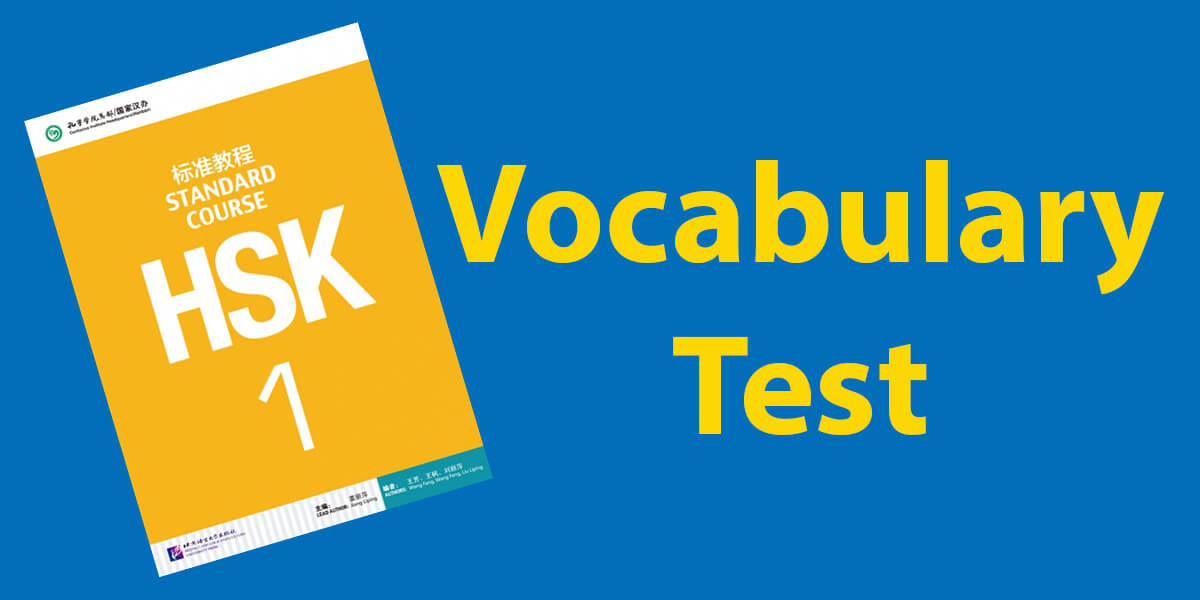
4. Lǎobǎn: boss – Lǎobàn: wife
I don’t think it’s too bad to refer to your wife as the boss, it may even be true, but I don’t think it’s good to introduce your boss as your wife.
– Wǒ zhēn de bù xǐhuan wǒ de lǎobǎn, Wǒ yào huàn yīgè xīn de. I really don’t like my boss, I want a new one.
– Wǒ zhēn de bù xǐhuan wǒ de lǎobàn, Wǒ yào huàn yīgè xīn de. I really don’t like my wife, I want a new one.
You can make some funny mistakes mixing up either word,
– Wǒ xǐhuan zài wǒ lǎobàn shēnbiān xǐng lái. I love waking up next to my wife.
– Wǒ xǐhuan zài wǒ lǎobǎn shēnbiān xǐng lái. I love waking up next to my boss.
5. Kǒuzhào: facemask (the type doctors wear/you wear for pollution) – Kǒujiāo: oral sex
I don’t have to tell you how this could be a BAD mistake to make!
– Duìbùqǐ, Wǒ xiǎng mǎi kǒuzhào? Excuse me, I want to buy a face-mask.
– Duìbùqǐ, Wǒ xiǎng mǎi kǒujiāo? Excuse me, I want to buy oral sex.
Lesson to learn?
LEARN FROM OTHER PEOPLE’S MISTAKES!!
Chapter 11 – Further Reading?
Got a thirst for more? Can’t blame you!
Chinese is a fascinating subject that knows no boundaries.
Luckily our blog(s) are the perfect place to cover endless topics relating to China.
Here’s some more we think you’ll be interested in:
- Learn Chinese on your Phone – There’s a tonne of mobile apps to learn Chinese these days but which are the best?
- Dating in China – Chinese culture is deep as we’ve touch on above but it doesn’t just relate to education! What’s it like to date someone in China? Not what your used to that’s for sure!
- Slang in China – Learning from the textbook is all good and well but what about those new phrases everyone seems to be using? Time to learn some alternate Chinese!
- Chinese Proverbs & Chinese Sayings/Idioms – We’ve got two blogs on this because it’s such an in-depth topic! Get to know some great bites of wisdom from traditional Chinese culture.
- Chinese Menus – You learn some key characters relating to food and you think you are ready for the local Chinese restaurants, then BAM. 241089 characters you never knew existed! Follow our guide on how to become an expert when ordering from a purely Hanzi based menu.
Chapter 12 – What About Chinese Numbers?
DID YOU KNOW – Numbers in Chinese likewise have their own characters.
We’ve provided another separate blog on Chinese Numbers, but we’ve also spent some time making some useful videos for you also to given you a quick guide to Chinese numbers!
Thank you so much for reading/watching!
Love learning languages? Then get stuck into this lot…
DID YOU KNOW – Korean does in fact have an alphabet and it’s generally really easy to learn. As we also teach Korean we spent some time putting together an equally excellent guide for the Korean Alphabet here!
Whilst you’re at it you may as well discover that Japanese doesn’t have one, even two, but three alphabets! Find out more about the three Japanese Alphabets here.
Russian is also a fascinating language to learn and can cause confusion with English learners given that P, H and C represent different sounds entirely. Check out our full guide to the Russian alphabet here.
And just to finish off, why not learn the 29 letters that make up the Vietnamese Alphabet.
Come check it out and why not take a look at our Online Korean, Russian, Vietnamese and Japanese Classes at the same time!
Drop us a comment below if you haveve any questions – or rate our blog out of 10 and tell us what else we should be doing to improve.
Chinese Alphabet || FAQs
Is there a Chinese Alphabet?
No there isn’t. In English we learn the 26 letters, but in Chinese there is no alphabet. You learn the characters which make words. Words are made up of 1, 2 or 3 characters in most cases. Therefore, Chinese is very much about memorizing the characters. It gets easier as you go on!
How many Chinese characters are there?
According to the Hànyǔ dà zìdiǎn (汉语大字典) they say the number of existing Chinese characters is actually 54,648. Don’t worry though, if you know anything around 2,500 you will be reading newspapers and magazines with absolutely no problem.
If you want to crank it up further, The Dictionary of Chinese Variant Form, Zhōnghuá zì hǎi (中华字海) includes definitions for a mere 106,230 characters.
A good start is to learn the most common 100 Chinese Characters. You’ll see these everywhere.
How many Chinese characters should I learn?
A very broad question but let’s try and break it down for you. To read a book, magazine or newspaper you need to master over 2,000 Chinese characters. If you can read 1,000-1,500 you’ll be able to get the jist of the article/story but getting towards 2,000 and beyond will make your life much easier.
500 Chinese Characters – get the basics nailed
2,000 Chinese characters – the number you need to read a newspaper
2,633 Chinese characters – the number of characters you should know to pass the HSK 6 exam
8,000 Chinese characters – the number an educated Chinese person will know
20,000 Chinese characters – the number a modern day Chinese dictionary would use
Are some Chinese characters the same?
Yes some Chinese characters can have more than one meaning and be pronounced in different ways. Generally the context of the sentence gives this away.
For example 行 (xíng or háng, hàng, héng, hèng) has different meanings and different pronunciations, but if you saw 银行 the first character gives the meaning away (bank).
Is there a specific stroke order when writing Chinese characters?
There are 11 basic strokes that make up all Chinese characters. Although learning to write Chinese today doesn’t hold the same weight as previous years, it’s still a useful skill to know when learning Chinese.
For example, using the wrong stroke order means the ink lands differently on the page, and can prove your character to be incorrect.
You can discover more about Chinese Stroke Order here.
Are simplified and traditional Chinese characters different?
Actually some are the same or have very subtle differences.
It entirely depends on the character. Some are very different though and appear much more complex.
Should I learn Simplified or Traditional Mandarin?
It’s entirely up to you. It may also be dependant on your location. In mainland Chinese, it’s probably best to learn Simplified Chinese given that Simplified is far more common.
That said, a visit to Taiwan might mean it’s a better move to take up Traditional Chinese due to the fact Taiwan uses solely traditional characters.
Can I learn Chinese in a year?
You can sure make excellent progress in that time yes.
We’ve had students pass HSK 6 after starting with zero Chinese, within a year.
Some students ask for fluency in 3 months, that’s just no possible, but within a year you can get very far with some hard work and determination!
Do you have any mock HSK exams?
You can take mock HSK exams using the HSK Online app but if you wish to test your HSK vocabulary, take our free HSK tests which are on our website.
Want more from LTL?
Want to learn Chinese from the comfort of your own home? Then our 24/7 online Chinese lessons might be the thing for you.
We offer a 7 day free trial to all new online students where you can study Mandarin 24/7.
Come and check it out free of charge and see what you think!
If you wish to hear more from LTL Language School why not join our mailing list?




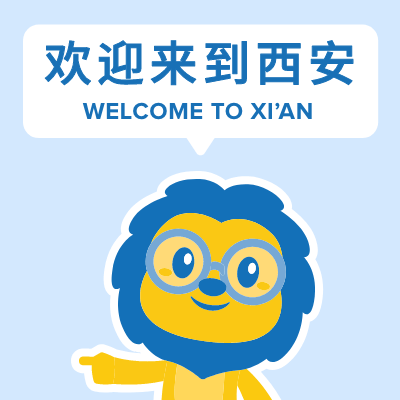




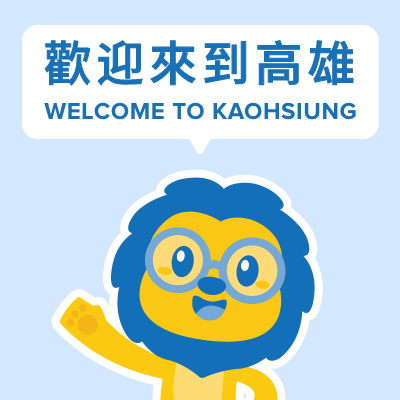
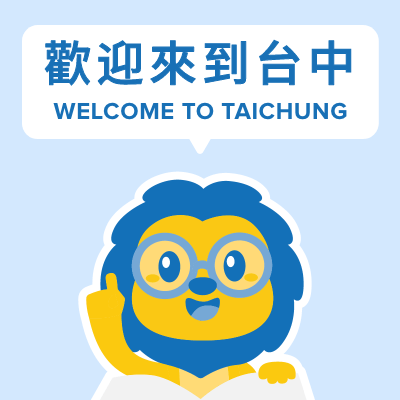





 Hi, my name is Manuel! I am from Spain and I am a Student Advisor at LTL. I’m now based at our Seoul School after living 3 years in Taipei.
Hi, my name is Manuel! I am from Spain and I am a Student Advisor at LTL. I’m now based at our Seoul School after living 3 years in Taipei. Hi, my name is Mojca! I am from Slovenia in Europe and I work as a student advisor at our Shanghai school.
Hi, my name is Mojca! I am from Slovenia in Europe and I work as a student advisor at our Shanghai school.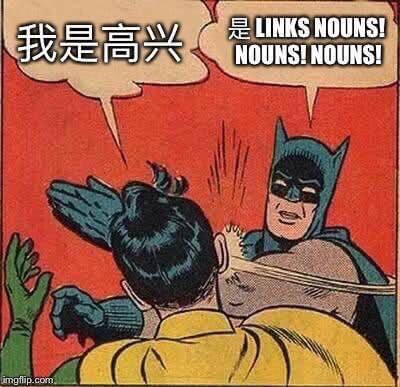
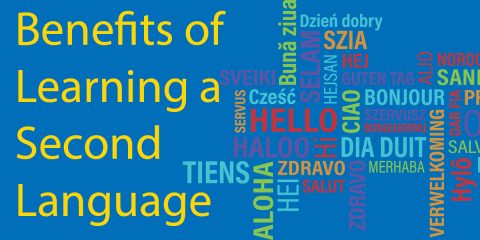

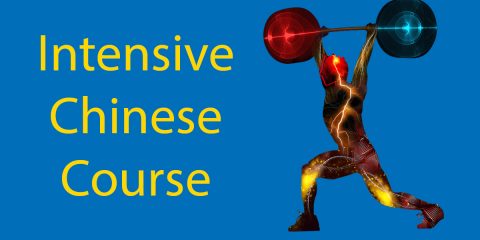

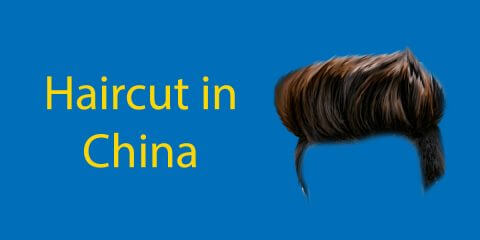
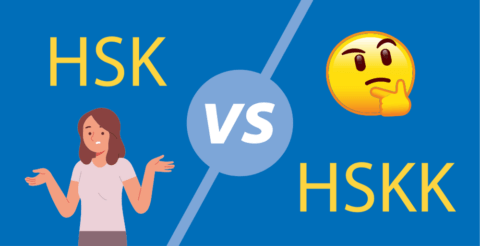
33 comments
[…] all languages make use of alphabets. For example, the LTL Mandarin School points out that Chinese instead makes use of characters, which can serve as words on their own or combine with […]
[…] wrote an article teaching you EVERYTHING about the Chinese Alphabet (6,000+ more […]
[…] to learn Chinese Characters while being scared half to […]
[…] design of the Tang Suit often includes a pattern of Chinese characters, usually with the characters 福 (meaning happiness) and 寿 (meaning longevity). These […]
[…] hard to categorize the top 100 common Chinese characters when there are thousands to choose from. Tens of thousands, in […]
[…] A lot of people also say that there is no logic to Chinese. However, in reality, there is! […]
One of the best articles I've read about Mandarin, realy in depth. Thanks Max, will check out the numbers one also.
Super kind thanks Emily - it took some time to prepare but we are glad it's worth it!
Yes our numbers one is here if you need a link - https://ltl-taiwan.com/chinese-numbers/
Happy Learning!
Max
Chinese is harddd!
Once you are over the first steps it's not TOO bad Jal! Trust us, if we can do it, anyone can!!
A great guide, love your youtube channel.
Issy
Thanks Issy! Hugely appreciated
[…] You can see more similar examples in the video for this article, which discusses the best way to learn Chinese characters. Also, you will find a larger explanation and plenty of examples in this fantastic post from LTL Mandarin School. […]
[…] ltl-school […]
You really went all out on this one 😂 thanks for taking the time to prepare it because I guess it took hours
A few hours and more were spent - all worth it though, thanks Richard!
Well, that clears that right up.
Glad we could be of help Royce!
[…] there is not. Chinese is built through characters which you must memorize. As you learn more Chinese, they begin to make logical sense, but the key […]
Nothing like Korean then!
🤪 not quite I'm afraid Luka!
[…] There are 26 letters in the Latin alphabet – that’s the alphabet you’re reading in now! – but other alphabets are different. The Greek alphabet has 24 letters, the Russian has 32 and there are only a teeny tiny 54,648 Chinese characters! […]
[…] How many Chinese characters? Too many! […]
[…] we talked about the Chinese language, it’s alphabet and how to use radicals and combining characters when studying this […]
[…] There are 26 letters in the Latin alphabet – that’s the alphabet you’re reading in now! – but other alphabets are different. The Greek alphabet has 24 letters, the Russian has 32 and there are only a teeny tiny 54,648 Chinese characters! […]
[…] design of the Tang Suit often includes a pattern of Chinese characters, usually with the characters 福 (meaning happiness) and 寿 (meaning […]
[…] also provided extensive articles about the Chinese Alphabet and the Vietnamese Alphabets as […]
[…] Chinese Alphabet // FAQ’s Answered & The Truth Revealed […]
[…] you’ve been studying Chinese for a while, did I miss any important characters? What other tips do you have for reading Chinese menus? Leave them in the comments […]
[…] as one would expect. Anyhow, in most languages, the letters of the alphabet are symbols. Chinese, which makes use of ideograms (aka pictograms) rather than letters, is a notable exception. “The […]
[…] Quote from the source: … […]
[…] tzu is the Wade-Giles romanization of the […]
[…] script containing approximately between 600 and 700 symbols. Many Nüshu characters are based on Chinese characters, but some are modelled on embroidery stiches and designs. Women would usually use a bamboo stylus […]